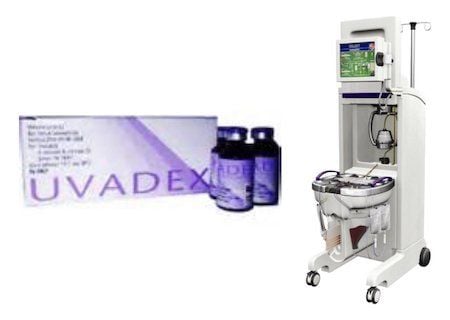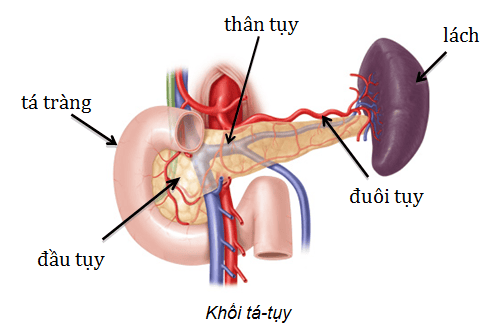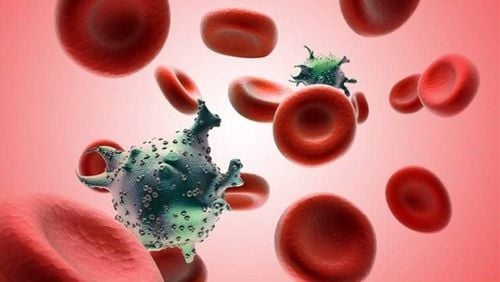This is an automatically translated article.
On the human body, lymph nodes are distributed in many places such as on the collarbone, neck, armpit and groin. The phenomenon of lymphadenopathy in the neck can warn of many inflammatory diseases or cancers in the organs of the respiratory tract, thyroid, larynx and muscles of the head and neck,...1. What is lymphadenopathy?
1.1 Nodes and function of lymph nodes In the human body, in addition to the dynamic and venous circulatory system, there is also a lymphatic circulation system consisting of lymphatic vessels (lymphatic vessels) and lymph nodes (nodes).Lymph nodes are usually oval in shape, ranging in size from a few millimeters to about 1-2cm. In terms of function, the lymph nodes are part of the hematopoietic system (the hematopoietic system includes bone marrow, thymus, liver, spleen and lymph nodes) with two main functions:
Directly imprisoning and destroying bacteria, viruses, foreign cells (such as cancer cells) when they enter the body; Indirectly destroy bacteria, viruses, foreign cells and create immunity for the body through the production of antibodies. The lymph nodes are distributed almost throughout the body, from the visceral organs, the abdomen to the subcutaneous soft tissues. When the superficial lymph nodes under the skin enlarge, they can be palpated. Usually, the most palpable nodes are the cervical, inguinal, and axillary nodes.
1.2 What is lymphadenopathy? Normally, lymph nodes are submerged, not palpable. It is only when the lymph nodes have to work hard to fight disease that they swell. Because the function of the lymph nodes is to produce lymphocytes and antibodies against pathogens. Swollen lymph nodes (also called swollen lymph nodes) are small pea-sized masses on the body. These tumors grow along the joints of the wrists, hands, ankles or feet, armpits, neck, groin, etc. They are oval or round in shape, often with fluid inside. When pressing on the swollen lymph nodes, the patient will feel pain.
The phenomenon of lymphadenopathy usually appears in people 20 - 50 years old, the rate is 3 times more common in women than in men. In most cases, enlarged lymph nodes are caused by inflammation, infection, or malignancy (primary lymphoma or metastatic lymphoma).

Khi hạch hoạt động mạnh để chống lại bệnh tật thì sẽ sưng to
2. What are the causes of swollen lymph nodes in the neck?
According to experts, the phenomenon of swollen lymph nodes in the neck has many forms and is a manifestation of many different diseases such as:2.1 Swollen lymph nodes in the neck warn of an infection Due to inflammation: Inflammation of the nose and sinuses, ulcers. tonsils, pharyngitis, inflammation of the gums, inflammation of the salivary glands, ... causing swollen lymph nodes in the neck. Due to geography: The phenomenon of swollen lymph nodes in the neck is common in people who are thin and weak, with poor overall health. The lymph nodes are usually small, easily mobile, painless, and dense. The lymph nodes will go away on their own when the general health is better and no treatment is required; Syphilis: In the early stages of the disease, lymph nodes become enlarged near the place of entry of the spirochete (inguinal). Usually 4-5 small, slightly solid, easily mobile and painless lymph nodes. By stage II, lymph nodes may be floating in many places on the body, including the neck area; Tuberculosis lymph nodes: Small, numerous, unequal in size, painless, appearing gradually, arranged in chains along both sides of the sternocleidomastoid muscle, below the jawbone, and in the neck. The patient has additional symptoms of fever in the afternoon, weight loss, thinness, paleness and other lesions in the lungs, pleura, and peritoneum. 2.2 Swollen lymph nodes in the neck warn of blood disease Acute leukemia: The lymph nodes are enlarged, soft, easily mobile, appearing in most of the lymph node areas such as neck, armpit, groin, supraclavicular fossa. Swollen lymph nodes are usually only a secondary symptom. Prominent symptoms are anemia syndrome, subcutaneous bleeding syndrome, high fever, rapid spleen enlargement, ulcerative lesions of the oral and pharyngeal mucosa. When making a blood chart, there will be a decrease in erythrocytes, white blood cells and platelets; Chronic lymphocytic leukemia: The lymph nodes are numerous, most of which are small, fast-growing, mobile, soft, distributed in the neck, armpits and groin. The patient's spleen is slightly enlarged, when doing a blood and bone marrow chart, the red blood cells and platelets will decrease, the lymphocyte flow increases a lot; Hodgkin's lymphoma: More common in men than women, enlarged in the left supraclavicular fossa and then spread to the neck. The lymph nodes are solid, painless, non-adherent to the skin, non-sticky, and non-purulent. Patients often have symptoms of fever intermittently, each time the fever will enlarge or appear another lymph node. 2.3 Swollen lymph nodes in the neck warn of cancer Lymphoma: Having enlarged lymph nodes, solid density, little mobility because of deep tissue attachment. There may be individual nodes, but there are also cases where the nodes are fused together in clusters. Patients may have other accompanying symptoms such as edema, pain around the swollen lymph nodes due to nerve and blood vessel compression. Diagnosis is confirmed by lymph node biopsy that can detect cancer cells; Metastatic cancer: Head and neck cancers such as nasopharyngeal cancer, laryngeal cancer, ... all cause symptoms of cervical lymphadenopathy. In addition, cancers in other organs such as stomach cancer, breast cancer, etc. can also cause swollen lymph nodes in the neck.

Các bệnh ung thư vùng đầu cổ đều gây triệu chứng nổi hạch cổ
3. Treatment methods for swollen lymph nodes in the neck
When having swollen lymph nodes in the neck, patients should go to a reputable medical facility to get an accurate diagnosis of their health status and appropriate treatment.Swollen lymph nodes in the neck due to pharyngitis, tonsillitis,... for a long time, the patient only needs to treat the cause of the disease, and the lymph nodes will sink on their own after a few days or 1-2 weeks. If the lymph nodes are painful and swollen, the patient can use hot ice to soothe and help reduce the swelling; If the doctor suspects that the lymph nodes are swollen due to cancer, the doctor can use the endoscope to screen for the primary tumor in the nasopharyngeal area, larynx, gastrointestinal tract, ... or biopsy the lymph nodes. In cases where the patient is diagnosed with cancer, the lymph nodes have lost their protective function, so they need to be treated with radiation therapy or surgical removal of the entire lymph node carrying cancer cells. When seeing swollen lymph nodes in the neck, the patient should go to the doctor as soon as possible to get the most accurate diagnosis. Treatment will depend on the cause of the lymphadenopathy. After treatment, patients need to have regular check-ups to monitor results and promptly adjust therapy if the current method is not effective.
Department of Examination - Vinmec International General Hospital is one of the addresses for general examination and treatment, including swollen and swollen lymph nodes in the neck. At Vinmec, the medical examination process is scientific, the procedure is quick, the patient does not have to wait long, most of the examination process is completed within the day; Medical staff with high professional qualifications, professional working style, dedicated and thoughtful; Comprehensive facilities, including a system of clinics and consultations, blood collection rooms, dining rooms, waiting areas for customers; Enthusiastic advice and support, reasonable and convenient examination process...
Please dial HOTLINE for more information or register for an appointment HERE. Download MyVinmec app to make appointments faster and to manage your bookings easily.













